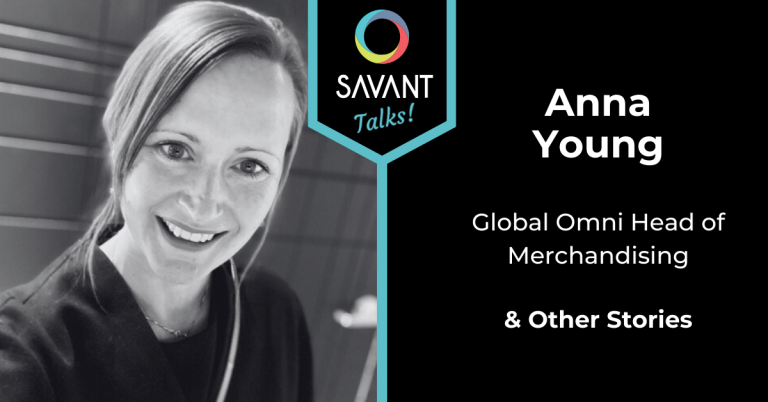This week we had the great pleasure of sitting together with André Vriens, Managing Partner at EyeOn, for an insightful conversation about uncertainty, data and No-touch Sales & Operation Planning. Here’s what we talked about.
What are the key challenges your clients are facing in 2019?
Well, the most relevant trend we see is that the world is more volatile and uncertain than ever before.
This happens on two different levels: first of all, the world as a whole is more uncertain than before, trade discussions between the USA and China, Brexit and unpredictable political situations that companies have to cope with without really knowing what’s going to happen. This puts companies in a position where they have to think in terms of scenarios, rather than mere forecast, it’s crucial to plan how they will react to different potential outcomes.
On a second level, we see uncertainty growing in consumer’s behavior too. The individual consumer in the past used to be very loyal not only to products and brands, but to channels as well. The present is really different: it’s way easier to discover and find new products, comparing pricing, having many more information available, making the consumer way less predictable than he used to be.
We also see that the borderline between being a manufacturer, the brand-owner and a retailer, is getting more and more blurred. Retailers are developing their own products, creating brands while manufacturers and brands are going directly to the consumer, skipping the retailer.
How do you help your customers to tackle these challenges?
One of the key aspects of our proposition is to deploy the know-how of a company in the best possible way, and it’s crucial to look at it with a holistic approach.
Planning and forecast knowledge and capabilities are not owned by one individual, but they are the result of a cross-department, combined effort. Marketing knows what the trends are and has a clear overview of consumer behavior. The sales department knows which products are going to be on sales, what’s the pricing situation and what are the currently active and planned promotions. Supply chain & financial departments are the best equipped to handle big amounts of data and analyse what’s happening in the market, what are the drivers of changing circumstances. As the amount of available data is rapidly increasing, more and more potential sources of data need to be taken into consideration, both within and outside the company.
We, as a company, start to analyse the business environment first, then evaluate how we can optimise the cooperation of different functions and how we can develop a lean, smooth process where every part involved adds value.
Last but not least, we need to see how our client can make the best use of machines, technology, resources and how they can optimise them throughout the different steps of the process.
Talking about data, how long is the feedback-iteration cycle?
In the past many companies only had monthly processes for mid and long term planning, while now the response time is getting quicker and quicker.While mid and long term thinking are still important for procurement, capacity planning etc, the increase of volatility brings the necessity to react faster and better.
The speed from a business need perspective has to be faster, thanks to technology that enables you to react faster as data is available earlier and easier than ever before. Until 5-10 years ago, the industry was used to pay big money to for example Nielsen or GFK to get data only after 3-4 weeks after the closure of a quarter. Now instead, in the more mature channels, the exchange of data between retailers and manufacturers happens day by day, hour by hour even: a retailer can check out what’s going on in a store on hourly basis. The cycle of information and data is of course getting shorter and shorter.
No-touch Sales and Operation Planning process. How would that work in an ideal situation?
Sales & Operations planning is an integrated business process whereby leadership-team focus, alignment and synchronization between all levels of the organisation will be involved in the decision making process. The S&OP process includes demand forecasting, what leads to sales, production and inventory plans. Besides that it also includes development plans for new products, the link to strategic initiatives and accompanied financial plans. Frequency and planning horizon depend on the specifications of the company. Traditional supply chain and sales & operations planning processes can benefit even more from the technical development.
In general, planning still relies heavily on labour-intensive aggregation and data cleansing, manual analysis and personal judgment. Digitalisation of planning allows unprecedented levels of responsiveness and speed to be achieved.
In the digital environment no-touch enables fully automated planning, continuous
planning and re-planning, thereby increasing both accuracy and efficiency. Some activities, such as the development of short-term demand forecasts for basic stocks (SKUs), can already be carried out fully automatically, but automation is only part of the story. To exploit the full potential of no-touch S&OP planning, companies have to invest in advanced analytics, machine-learning technologies and process redesign, while also adjusting their organizational structures and what they demand from people.
If you would like to hear more from André, he will join us at Savant Supply Chain Congress this May for an Innovation Roundtable – Building the data driven supply chain and a panel with other Supply Chain thought leaders – Building relationships between the supply chain and other departments. Secure your pass here!
Back to the Blog!




